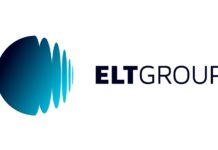Leonardo has been awarded 18 research and development (R&D) projects, including 10 capacitive development and eight research projects, under the Work Program 2022 (WP22) of the European Defence Fund (EDF), the company announced on 24 July 2023.
The EDF is the European Commission’s flagship for promoting defence co-operation through competitive and collaborative projects, which cover the entire R&D cycle.
Projects in which Leonardo participates won a total of about 74% of the funds allocated for WP 22, which amounts to around EUR 614 M out of a total of EUR 832 M.
Leonardo, with significant contributions from the group’s subsidiaries and investees and Labs/Cloud Computing, won funding for R&D activities in 11 categories across the electronics, aircraft, cyber and space sectors. Five additional winning projects also feature participation from companies controlled and/or participated in by Leonardo: Telespazio, Larimart, Elettronica, MBDA Italia, and CREO Consortium.

Notable projects with Leonardo’s involvement include:
- The Technology Innovation for European radar systems Application (TIRESYAS) programme, which relates to the study of a new family of multi-domain (air-sea-land) sensors that share both architectural solutions for hardware components and software functions in order to fulfill different missions for different application domains. This enables full advantage of the possibilities offered by digitisation, which also opens the application of algorithms based on artificial intelligence. Leonardo will co-ordinate a group of 29 entities at the European level, including Thales, Indra, Hensoldt, Saab and Italian entities such as CNIT and other Italian small/medium enterprises (SMEs) specialised in the field. The total value of the project is about EUR 15 M covering a duration of 36 months.
- The European Command and Control System (EC2) project is aimed at developing the future strategic command and control system for the European Union (EU), which will enable the EU External Action Service to reach the level of ambition set by its Strategic Compass. The project, co-ordinated by Indra, involves 21 European partners and will last 24 months, with a total value of about EUR 47 M.
- The Future Air System for European Tactical Transportation (ASETT) project will analyse the specifications and market opportunities for the development of a new fixed-wing platform for military tactical transport. In particular this feasibility study aims to conduct a needs analysis on the replacement of tactical transport aircraft in the fleets of EU member states in the 2030-40 horizon and identify opportunities for co-operative development. Funded by the EDF for EUR 30.06 M over 18 months, the project is led by Airbus and will involve 11 member states and 33 European partners.
- The MultinatiOnal Development INitiative for a Space-based missilE earlY-warning architecturE II (ODIN’S EYE II) project will contribute to the further development of the European Space-based Missile Early Warning (SBMEW) architecture already launched under the European Defence Industrial Development Programme in 2020. The goal of the member states is to develop a common warning capability to respond to current and future threats to EU security. The project, co-ordinated by OHB System AG, involves 38 European partners, will last 36 months and have a total value of about EUR 96 M.
The EDF contributes to the EU’s strategic autonomy and supports the creation of a more competitive and integrated European defence technological and industrial base via cutting-edge projects, interoperable technologies and equipment, and promotion of innovation and small/medium enterprise participation. The total EDF funding amounts to EUR 832 M allocated by the EU, which is then distributed among 41 winning projects drawn from 134 proposals submitted by companies across 26 European countries plus Norway.
Peter Felstead



![After DEFEA 2025: IMCO Group Advances Strategic Partnerships Across Europe and the Balkans A Joint demo with Rafael – for Enhanced Situational Awareness and Mission Effectiveness [Photo © IMCO]](https://euro-sd.com/wp-content/uploads/2025/05/IMG_0373-Kopie-218x150.jpg)







